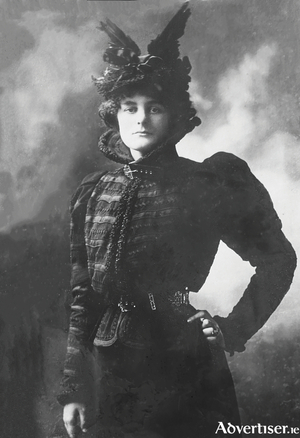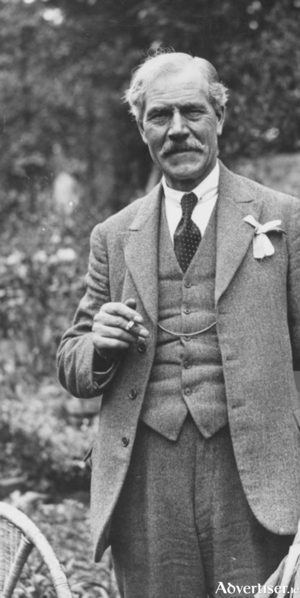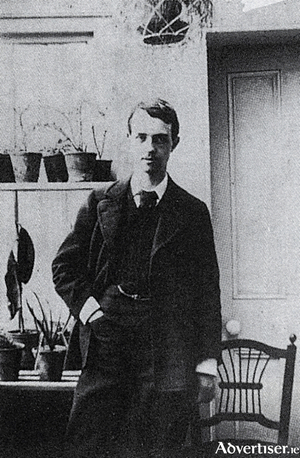Search Results for 'William Henry'
36 results found.
Maud Gonne swept in and out of meetings

The most revolutionary play ever produced on an Irish stage was Cathleen Ní Houlihan written by WB Yeats and Lady Gregory. It was performed to a packed audience on a makeshift stage at St Teresa’s Hall in Clarendon Street, Dublin on April 2 1902. It was astonishing in its veracity.
An affair to remember

‘Dearest beloved - It is such a beautiful morning that you ought to be here and we should be walking in the garden …and if we were, what more should we do where the bushes hid us?’ These intimate words were written by the British politician, later prime minister, Ramsey MacDonald, to Lady Margaret Sackville whose initials are on the famous autograph tree at Coole.
Hidden lives on a Galway tree

In April 1902 Augusta Lady Gregory was working hard at her home at Coole, translating from Irish the myths and legends of Ireland. Somebody had dubbed Coole ‘the workshop of Ireland’, and the phrase went straight to her heart. Her pride in it glows in her letters to Wilfrid Scawen Blunt, her one-time lover and life-long friend, and admirer.*
The names on the Autograph Tree at Coole

It may seem out of place that the name Robert (known as Robbie) Ross is associated with probably the best known literary monument in Ireland, namely the autograph tree at Coole Park. With the exception of two soldiers’ names, all 24 others are poets, writers and artists all of whom Lady Gregory believed were worthy to be included in her particular and original ‘hall of fame.’
Dear Mr Semple I am that girl……

Anne Root (formerly Browne) was about 16 years-of-age when she went to work for the Blakes at Menlo Castle. She was employed as a housemaid, and joined two other house staff, a parlourmaid, and a cook Delia Earley, with whom she shared an attic room. She and Delia became warm friends, and shared a terrifying ordeal when they were trapped together on the roof of the castle as it burnt in a raging fire on July 26 1910.
Tragedy at Menlo Castle
In the early hours of July 26 1910 Menlo Castle, on the bank of the river Corrib, was totally gutted by a fire. Sir Valentine and Lady Blake’s daughter, Ellen, was lost in the flames. The cook Delia Early, who lived on the attic floor, jumped to her death. Delia shared a room with housemaid Anne Browne, who waited until her clothes were in flames, before jumping. She landed on a pile of hay placed by other household staff to break her fall. Severely injured and burnt, Anne was driven on an open truck, slowly into the Galway Infirmary, lying on a door to ease her movement and pain. Local farmers gave her milk to drink to try to cool her down.
The joy of crowds

Looking at the happy crowds in Galway for this year’s Galway Arts Festival, I can appreciate that the sense of joy and surprise is heightened because it is shared on a huge scale. The crowd itself is a key part of the attraction. People lose their inhibitions among the horde.
Events to remember Armistice Day
Events are to be held locally this week to mark the centenary of Armistic Day.
Galway City Museum to mark the end of WWI

On Saturday November 10, the eve of the centenary of the armistice which ended WWI, Galway City Museum will host a special lecture on The Great War of 1914 to 1918.
Liam O'Flaherty's WWI records to go on display in Galway

IN SEPTEMBER 1917, while fighting in Flanders during World War I, Liam O’Flaherty was seriously injured, suffering shell-shock, the trauma of which remained with him all his life.

